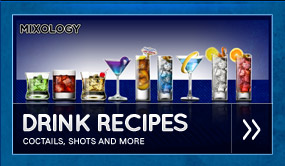
BLU & You | Medical Facts
![]()
BLU is the next generation of energy drinks.
After combining 2 years of research and development, we have paved a new path into the future of the market. In 2006, our research confirmed, heart palpitations/arrhythmias and acid reflux, as the primary and secondary concerns of consumers when faced with the decision of whether or not a migration to energy drinks from conventional soft drinks and coffee was possible. With this knowledge, we broke down the components of the most commonly consumed energy drinks.
These components being caffeine, B-vitamins, Taurine, Glucuronolactone, Inositol, Guarana, and Ginseng. Upon further study, all ingredients, except for Glucuronolactone and Inositol , had either been considered safe or have been widely used for years in multi-vitamins and in holistic medicine stores.
It is commonly known that caffeine in large doses can affect the lining of the stomach and can be attributed to ulcers and other gastrointestinal issues including but not limited to acid reflux disease. Many of our competitors contain an average of 160mgs of caffeine per can, which has been severely criticized by medical professionals in every form of media available. Much criticism has come from the combination of caffeine with other ingredients commonly found in energy drinks and the negative effects that ensue. Therefore, BLU decided that only 80mg of caffeine should be used in our product, which is equivalent to one 8oz cup of coffee or a 20oz Coca Cola.
B-vitamins have been used for the better part of a century to increase energy and promote healthy living. Studies ranging from the American Medical Journal to an article published in 2003 by PsychologyToday.com, which states that B-Vitamins are “the key to energy”. We agreed and maintained the industry standard percent daily value of B-vitamins in our products.
Taurine is a commonly occurring amino acid in the body that promotes muscle maintenance and is known as an anti-diuretic. Common thought for the inclusion of this product into energy drinks was to prevent the diuretic properties of the caffeine to dissuade consumers from purchasing the products. No consequential negative conclusions were made in our studies of this ingredient, and it was subsequently concluded that its omission from the ingredients list could cause a negative response from consumers. Therefore, Taurine has maintained.
Ginseng and Guarana, ingredients commonly found in Monster, are generally regarded as safe. Ginseng, an all natural stimulant has been paired with herbal teas and used in dietary supplements for years. Guarana, is an alternative source of caffeine derived from the Guarana Root. It, too, has been used in dietary supplements for years. However, when combined with traditional caffeine and other ingredients found in energy drinks, our researchers felt it would better to err on the side of caution and remove these ingredients from ours. It was thought that the 80mgs of caffeine per serving would suffice and provide a purer energy without the crash associated with our competitors. We were right!
This brings us to the two most controversial ingredients: Inositol and Glucuronolactone. Many studies done here in the United States have found that there has been insufficient research done on these ingredients to determine the consequences of their inclusion in energy drinks, however, upon further research done by our staff, we found that research has been done on these ingredients and the conclusions are alarming.
The effects of Inositol are the most unknown. Our researchers did find a study done in 1997 by the American Heart Association found at http://circ.ahajournals.org/content/93/1/23.full. This articles sites Inositol as a key cause to cardiac arrhythmias. Other scholars around the world, including Drs. Scott Willoughby and Kevin Alford of Australia have published articles like this one, http://www.abc.net.au/science/articles/2010/02/02/2808053.htm, that claim the combination of these harmful ingredients as the key causes to heart attacks when researching energy drinks. Furthermore, correspondence between our staff and Dr. Willoughby have revealed that Dr. Willoughby has begin extensive testing on the adverse side effects of Inositol. Also, we at BLU have contracted the services of Vascular Surgeon, Tif Siragusa, Chief of Vascular Surgery at Summit Medical Center and a fellow at Vanderbilt University in Nashville, TN. His mission for 2012 is to conclusively determine the vascular and cardiovascular effects of Inositol on the human body.
Glucuronolactone, on the other hand, has been studied at length. In the aforementioned article by Drs. Willoughby and Alford, Glucuronolactone was attributed to the following "Given the prolific use of these drinks within the young population, further research into the link between energy drinks and heart disease is urgently needed." Furthermore, Dr. Willoughby was quoted in http://www.reuters.com/article/2008/08/15/us-australia-redbull-idUSSYD5846120080815, stating that the combination of the ingredients in Red Bull showed "normal people develop symptoms normally associated with cardiovascular disease". This article goes on to state that Red Bull has been banned in Norway, Denmark, and Uruguay because of the negative effects of Red Bull on the body. Also, in an article by medical news today (http://www.medicalnewstoday.com/releases/5753.php), France has also banned Red Bull because of the negative effects. Good news…BLU is allowed in all of these countries because of the absence of Glucuronolactone and Inositol.
As the paradigm shifts in the beverage world, we at BLU are continuing to evolve and will ever strive to ensure that BLU is the safest form of energy drink on the market with the same boost consumers are accustomed to without the crash. We understand that consumers are becoming more and more educated, and demand healthier alternatives to the soft drinks of the past. Stay tuned as we continue to become not only the next generation of energy drinks, but also, the next generation of beverages.













